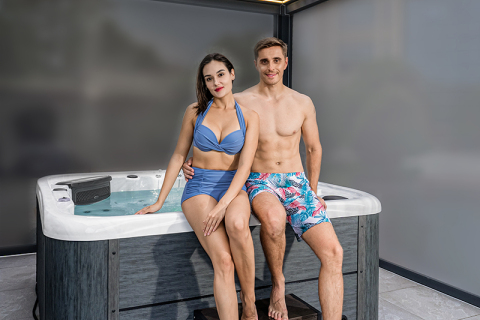
News
General Power Recommendations For typical 2-person outdoor spa hot tubs, the water capacity typically ranges from 300 to 600 liters. Within this capacity range, a heater power of 3 kW to 6 kW is generally recommended.
One of the core components of a swim spa jacuzzi tub is the pump, responsible for moving water, circulating it within the tub, and driving the massage jets. A water pump generates some vibration during operation. If this vibration is not effectively absorbed or secured, it may cause noise.
While spa jacuzzi bathtubs are designed to provide a comfortable hydrotherapy experience, if not properly maintained, the water within them can become a breeding ground for bacteria, fungi, and other microorganisms. These microorganisms can accumulate in the tub's jets and plumbing, especially if the water is not properly filtered and disinfected.
Poor air circulation in a spa jacuzzi bathtub environment can also cause breathing difficulties. Many people choose to close the doors and windows around the bathtub to maintain warmth, but this can also result in poor air circulation.
It's generally recommended that water not be left in a whirlpool or spa for extended periods. For most households, if the whirlpool or spa is not used for extended periods (for example, during the winter or during summer), it's recommended that the water be replaced every two to four weeks.
Advantages of a whirlpool spa hot tub: 1. Deep relaxation and stress relief 2. Integrated multi-functional design 3. Enhances quality of life and the quality of your home environment 4. Assists with health maintenance and rehabilitation 5. Diverse configurations to accommodate diverse needs Disadvantages of Whirlpool Spa Hot Tubs: 1. Expensive, High Barrier to Entry 2. Requires intensive installation and space constraints 3. High energy consumption, significant operating costs 4. Requires tedious cleaning and maintenance 5. Noise issues
Insulating the bottom and sides of your spa jacuzzi bathtub with soundproofing materials is an effective way to reduce noise. Use soundproofing foam or rubber pads, which effectively absorb pump vibrations and reduce noise.
When using an outdoor whirlpool hot tub, your body temperature is affected by the water temperature, dilating your skin's pores and accelerating blood circulation. If you don't rinse off immediately after leaving the tub, your body's temperature regulation system may be affected.
The warm water and heat therapy in a spa jacuzzi bathtub can effectively relax abdominal muscles. For abdominal discomfort caused by muscle tension or excessive stress, hot water helps relax abdominal muscles and relieve discomfort.
If the tub is designed for two people, the tub's size and massage jet distribution should be tailored to suit both. Too many jets can waste space, while too few can result in a poor massage effect. For a single-person tub, a smaller number of jets is usually sufficient, focusing on key areas of the body (such as the back, shoulders, and legs).










